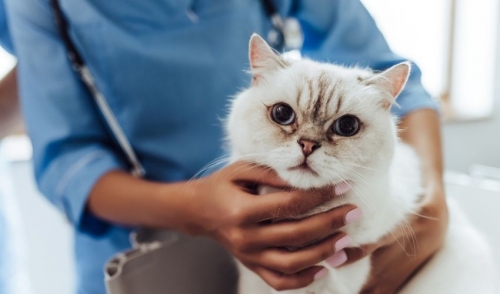{article.name}
How to Prevent Diabetes in Your Cat

- Share this:
- Share on Facebook
- Pin on Pinterest
- Tweet on Twitter
Diabetes is well-known as a serious disease in humans, but many pet owners don’t realize that this condition can be just as serious in pets. Knowing how to prevent diabetes in your cat can help you keep your feline family members fit and healthy for long, happy lives.
About Feline Diabetes
Feline diabetes – diabetes mellitus – affects from 1-2 percent of the overall domestic cat population. It is most common in older or overweight animals, and neutered males also have greater risks of developing diabetes. Burmese cats also have higher risks of becoming diabetic. Despite these increased risk factors, however, it is important for cat owners to recognize that any age, breed, or sex of cat, altered or not, can become diabetic.
Like the human disease, feline diabetes involves insulin deficiency that affects how blood sugar levels are regulated. Symptoms of diabetes in a cat might include:
- Dramatically increased thirst
- Frequent urination, including sudden incontinence or accidents
- Increased appetite as the cat is unable to metabolize its food efficiently
- Unsteady walking, particularly in the back legs, hocks, and hips
- Vomiting
- Depression and lethargy
Increased thirst and more frequent urination are the most common and obvious symptoms of diabetes for cats, but just observing those symptoms is not enough for a firm diagnosis. Pet owners who notice these symptoms in their cat should seek veterinary care immediately, and a blood or urine analysis test will be necessary to properly diagnose diabetes.
Preventing Diabetes in Your Cat
While some cats will be genetically prone to develop diabetes even under the best conditions, there are steps every cat owner can take to lessen the risk of their feline friend getting this disease.
- Offer your cat a high-protein, low-carb diet that best matches the natural, carnivorous diet they have evolved to digest. This typically means limiting dry food and offering more canned food instead, but check ingredient labels on different cat food brands to make the best choices.
- Help your cat maintain a healthy weight by not overindulging on large serving sizes and extra treats or snacks. If you do offer your pet treats, reduce their meal size accordingly to control their overall calorie intake, and weigh them regularly to adjust their diet if needed.
- Provide plenty of exercise and physical activity for your cat with spaces for climbing, jumping, and scratching. Add playtime into the daily routine so you can interact with your cat with pouncing, stalking, and other games to keep the animal active and nimble.
- Minimize steroid treatments for other conditions such as allergies, asthma, certain cancers, and inflammations. While steroids can be effective treatments for some conditions, improper use can also increase the risk of a cat developing diabetes.
- Get regular veterinary checkups that include blood or urine analysis to check for diabetes or pre-diabetic warning signs. The earlier the disease may be caught, the easier it will be to adjust your daily routine and your cat’s habits for safe, effective management.
Treating Diabetes in Cats
If your cat does develop diabetes, that does not automatically indicate a shorter lifespan or lesser quality of life for your pet. While there is no cure for feline diabetes, the disease can be easily managed with insulin injections, losing weight, increased exercise, and sticking to a healthy, low-carb diet. Some pills are also available to help regulate blood sugar levels, but consult your veterinarian for the best options to meet your pet’s needs and to adjust to their changing health over time. With care, feline diabetes can go into remission for months or years at a time, and your pet will lead a happy, healthy life.

Comments